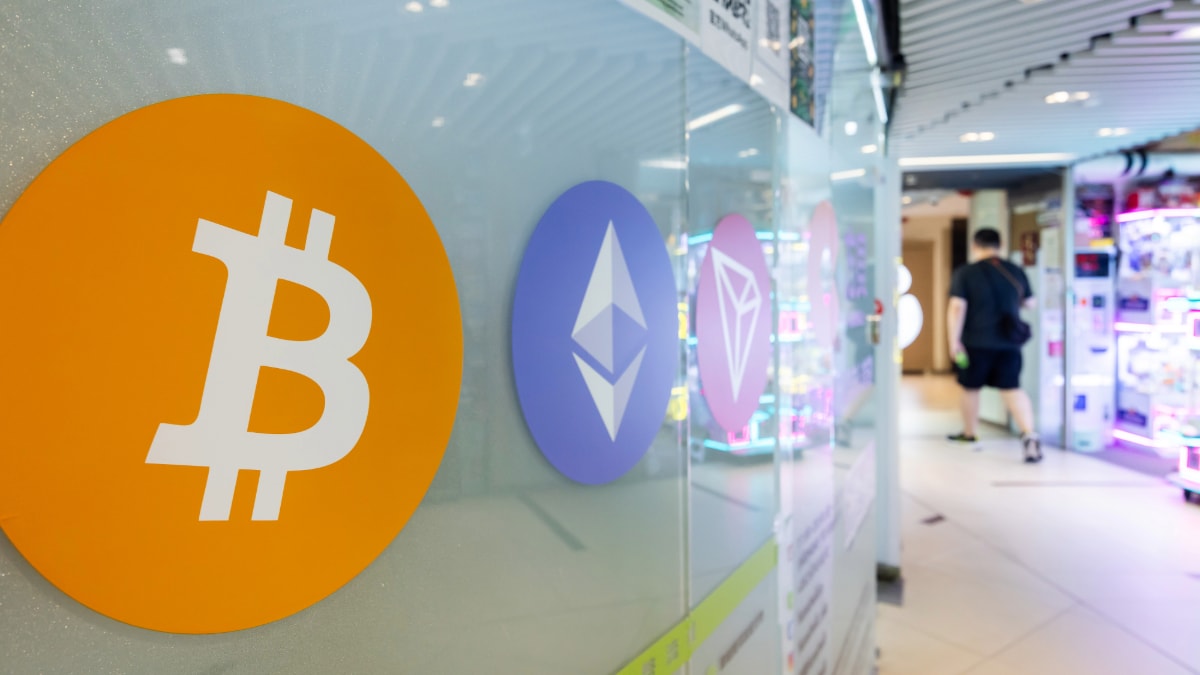A relentless wave of optimism is sweeping the nearly $4 trillion (roughly Rs. 3,45,54,041 crore) crypto market, driven by a frenzy of Washington policy moves accelerating its assimilation into regulated finance. The passage of a landmark stablecoin law and broader legislative momentum have injected new legitimacy into the sector, lifting prices and rekindling risk appetite across digital assets.
Signs of retail re-engagement are resurfacing. Coinbase’s app surged to fifth place in Apple’s Finance category, up from 25th a month earlier, according to data tracker Sensor Tower. Google searches for “Bitcoin” are climbing. Telegram groups and Discord forums saw spirited activity during Washington’s “Crypto Week,” a highly choreographed policy blitz that culminated in President Donald Trump signing the first major US stablecoin framework into law.
That spike in visibility, however, belies a more complex picture of who’s actually driving flows.
While consumer interest is returning, the rally’s architecture is distinctly institutional. Large private holders — those controlling 10,000 Bitcoin or more — acquired roughly 47,000 tokens ahead of Bitcoin’s all-time high of about $123,000 (roughly Rs. 1.06 crore) on July 14, 10x Research data show. Since then, these substantial holders have begun to unwind positions, contributing to a pullback to around $118,600 (roughly Rs. 1.02 crore). Much of the re-engagement started about a month ago, after stablecoin issuer Circle Internet Group’s blockbuster June initial public offering, according to Chris Rhine, head of liquid active strategies at Galaxy Digital.
“It’s encouraged all investors to get re-engaged— small retail to large institutions,” Rhine said. “We have institutions calling us now, asking how to position around stablecoins. The sense of urgency is there.” That urgency, however, is not translating into core retail metrics yet — at least as it comes to quarterly results. Coinbase Global Inc., which reports on July 31, likely saw its second-quarter trading volumes fall 44 percent from the previous quarter and 3 percent year-on-year, according to Oppenheimer & Co. Wallet app downloads for the exchange’s recently re-named other main app, Coinbase Wallet, dropped 51 percent quarter-on-quarter, with similar declines observed across other major exchanges, according to Sensor Tower.
Much of the speculative attention once directed at tokens has shifted elsewhere. Analysts note retail investors have pivoted towards AI-linked equities and crypto-adjacent names such as Strategy, where volatility and narrative appeal remain high. Some retail participants have exited the market entirely, citing macroeconomic concerns and “Liberation Day” tariffs, said Oppenheimer analyst Owen Lau.
What the recent rally reveals is a deeper shift in who is driving price action — and why it matters. Bitcoin treasury companies and asset managers are absorbing flows that once passed through individual wallets. Retail has hardly disappeared, but its influence is being channeled through structured products, not direct market activity.
Whether this marks a permanent reordering remains open to debate. Advocates for greater institutional involvement argue that established financial firms provide much-needed liquidity, lower volatility and more predictable behavior. They see professionalization as a prerequisite for crypto’s integration into global capital markets.
Skeptics contend that over-institutionalization risks undermining crypto’s founding principles. A market dominated by ETFs and regulated intermediaries may dull the participatory energy that fueled its early adoption. There are also concerns that innovation and open access could suffer as capital migrates to gatekept vehicles.
To be clear, ETF inflows are not exclusively institutional. Retail interest persists, albeit through advisory and brokerage channels. Spot Bitcoin ETFs have attracted about $19 billion this year, underscoring demand across both investor classes. Yet control and participation are not synonymous — and increasingly, the center of gravity appears to rest with allocators.
Mass retail participation may yet return. But for now, the tone of the market is being set not in Telegram chats or trading forums, but on the desks of traditional finance. Among investors of all sizes, though, as Rhine of Galaxy Digital observed: “The sense of urgency is there.”
© 2025 Bloomberg LP



